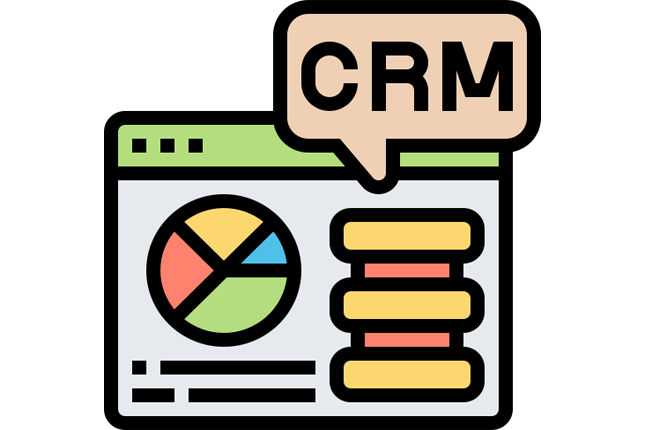Key Concepts in Marketing
Key Marketing Topics – Foundations for Practical and Lasting Impact

Marketing is recognized as an essential discipline that connects goods or services with the consumers and businesses that value them. This field involves strategic thinking, creative planning, and consistent execution across numerous channels. The topics outlined below illustrate different dimensions of marketing that remain relevant in day-to-day practice. Each section highlights why these elements matter and how organizations can apply them to reinforce their presence among target audiences. The discussion spans the entire spectrum of marketing work, from preliminary market exploration to final promotional initiatives and global outreach.
Basic Principles of Marketing
Every effective marketing effort begins with strong principles and a systematic plan. Individuals in this area define long-term goals that complement a company’s direction, outline the public image they want to build, and set rules for how to communicate effectively. This initial phase guides all subsequent decisions, ensuring that short-term actions align with broader objectives.
One common activity involves clarifying purpose and core promises to customers, sometimes called a value proposition. A company might identify that it offers the most user-friendly software for a specific industry, then shape all marketing and messaging around that promise. The process also analyzes demographic or behavioral data to pinpoint who is most likely to benefit from a product or service. By matching messages and platforms to likely user preferences, these foundational steps strengthen the chance of long-term success.
In many organizations, a strategic plan includes stated goals tied to revenue or consumer awareness levels. Teams decide how to measure outcomes by choosing metrics that reflect performance. Objectives might detail how many new subscribers to attract over a certain period or how to raise brand recognition among a certain age range. Once this framework is set, every channel can coordinate around a unified vision rather than scattering efforts in multiple unconnected directions.
Market Research and Consumer Insights
Understanding existing and prospective customers is crucial to marketing success. Research methods provide clarity on buyer needs, preferences, and changing expectations. Surveys offer quantitative data, capturing responses in numerical form, while in-depth interviews deliver more qualitative insights into motivations and sentiments. If a clothing brand wants to design a new line, conducting focus groups might reveal the styles and materials that resonate best with a particular audience.
Advanced market analysis often incorporates data analytics to track trends across large samples. Specialists might interpret changes in consumer buying habits alongside relevant events, such as shifts in economic conditions or new competitor offerings. These findings help anticipate market demands before they become mainstream. An online platform observing increased searches for home-based fitness solutions might decide to develop exercise programs or sponsor influencers who promote wellness routines.
Well-planned market research also highlights potential gaps that a product can fill. A study might reveal that busy professionals desire nutritious meal options with quick delivery times. A forward-looking brand then tailors its product line, marketing messages, and distribution channels to capture this unmet need. By building on validated insights, market research reduces guesswork and positions each initiative for success.
Brand Development and Management
An organization’s brand stands for more than a visual icon. It reflects a personality, set of values, and promise that helps define the user’s experience. Creation of brand identity involves naming, creating a memorable logo, and selecting colors or fonts that resonate with desired themes. Though visual symbols are central elements, they represent the deeper traits of the product or service, including tone of voice, customer service standards, and guiding beliefs.
After introducing a brand, ongoing management helps keep messages consistent. If a firm promotes a welcoming, inclusive atmosphere, then everything from product instructions to social media posts should reflect that warmth. Brand guidelines often define how to present text, images, and even partner relationships so that all public-facing materials share the same unified appearance.
Managing a brand also involves monitoring consumer reactions. If feedback shows that certain branding choices fail to connect with targeted users, leadership can adjust components to avoid confusion or negative associations. A brand built on authenticity could incorporate real user stories and genuine testimonials to strengthen trust. Consistency across ads, packaging, website design, and sponsorship activities ensures that the public builds a reliable sense of the brand and feels comfortable choosing it over alternatives.
The Marketing Mix: Product, Price, Place, and Promotion
This classic model underscores four core aspects that guide how an offering reaches consumers. The product covers everything from the design of a physical item to the attributes of a digital service. Professionals decide which features provide true value and how to package those features attractively. For instance, a software developer might create user-friendly tutorials to complement a product’s intuitive interface.
Price represents the cost to consumers, shaped by factors like production expenses and the overall market environment. Marketing teams also study how people perceive different price points and whether a higher figure conveys superior quality or a lower one attracts cost-conscious audiences. If two smartphone models have nearly identical specifications, slight shifts in cost can affect which option resonates more strongly with buyers.
Place involves the channels used to bring the product to its audience. Some brands thrive in physical retail outlets, while others do best with direct online distribution. Many combine both, ensuring that users can browse a website and then pick up the purchase from a local store if needed. Each choice in distribution influences convenience and can either motivate or discourage prospective users.
Promotion covers the methods of communication that create interest and persuade individuals to take action. These might include print ads, live demonstrations, virtual events, and online advertising campaigns. Effective promotion finds the correct mix of media outlets that align with the brand’s target market, and it designs messages that drive curiosity or trust. A premium apparel company might lean on aspirational imagery, while a cost-effective cleaning product might highlight reliability and practicality.
Digital Marketing
Online interaction has become a focal point for many promotional strategies. Digital marketing extends to sponsored posts on major websites, collaborations with streaming services, and methods that raise visibility on search engines. Websites optimized for search engine visibility often appear at the top of query results, which can be decisive for attracting organic visitors. The process of improving site structure, content, and user experience to rank higher is typically named search engine optimization (SEO).
Paid search advertising operates under a different model. Organizations bid on specific keywords to show short text or display ads near search results. The approach can be cost-effective if the chosen keywords accurately match user intent. Combining these tactics with retargeting (showing ads to people who previously visited a site but did not make a purchase) provides multiple opportunities to re-engage the same user.
Content Marketing and Storytelling
Engaging content makes a powerful impression by appealing to the audience’s interests rather than forcing traditional sales language. This method includes blog posts, downloadable whitepapers, recorded interviews, and visually appealing tutorials. The main objective is to provide real value, which might be educational or entertaining, so that potential buyers become more familiar with a brand’s perspective. Over time, consistent, valuable content cultivates trust and fosters loyalty.
A software provider may publish articles on best practices in data security, while an organic food distributor might record cooking videos that highlight nutritional benefits. In both cases, the brand positions itself as a knowledgeable entity that can assist. This pattern often encourages site visitors to sign up for updates, attend webinars, or eventually purchase.
Storytelling adds another layer by creating an emotional dimension around the product or service. Instead of describing features in a generic list, a story-based approach illustrates how a product improved someone’s day or solved a pressing challenge. This technique humanizes the marketing message, making it easier for consumers to imagine how an offering fits into their own lives. When audiences connect on an emotional level, they are more likely to recall the brand and share it with their networks.
Social Media and Influencer Outreach
Platforms such as Instagram, TikTok, Twitter, and LinkedIn have gained remarkable visibility, allowing brands to speak directly with their followers. Content here spans short text posts, photo series, or videos that spark feedback. Quick reactions from these communities can help a company gauge whether a promotional angle hits home or needs refinement. Consistent dialogue fosters a sense of connection and can amplify brand loyalty.
Influencer outreach draws on the credibility of individuals who have established reputations in certain fields. A nutrition coach with a large audience might partner with a health-focused product to demonstrate recipes or daily usage. Because influencers possess dedicated followers who trust their opinions, these partnerships often enhance brand credibility and reach niche demographics swiftly. Still, marketers must ensure that collaborations align well with their overall image to avoid sounding forced or inauthentic.
Social media is not limited to brand-generated content. Users often create their own posts, images, or reviews that reference a product. Marketers can encourage this form of engagement by running contests or featuring user-generated material on company pages. When executed with authenticity, these efforts can broaden recognition without appearing like traditional advertising.
Email Marketing
Communicating through personalized emails remains a mainstay in many marketing approaches. Well-structured newsletters keep subscribers informed of fresh announcements and practical tips. Automated sequences can deliver follow-up notes after a user takes certain actions, such as adding items to a cart but leaving before checkout.
Modern email platforms frequently integrate with customer databases, allowing organizations to address people by name or reference their order history. This personalization can raise open rates and engagement levels. Nevertheless, success depends on providing relevant and useful messages. Overly frequent emails or irrelevant content often prompt unsubscribes or direct filtering into spam folders.
Customer Relationship Management
Building long-term bonds with users involves more than one-off sales. The concept of CRM relies on storing, analyzing, and acting upon data concerning customer behavior and history. Systems that gather interactions from diverse channels—online chat, phone support, social comments—provide a unified view of each person’s journey. A brand representative might check past support tickets to see if a customer previously faced any issues, then tailor the next conversation accordingly.
A thorough CRM approach often includes loyalty programs or structured feedback loops to measure satisfaction. If a clothing retailer notices multiple complaints about a particular line, the CRM platform may highlight a common pattern. This information prompts product improvements or personalized offers for unhappy clients. By tracking data across time, these systems encourage a shift from short-term transactions to ongoing brand relationships.
Marketing teams benefit when CRM insights guide future campaigns. If data shows that a segment of users responds strongly to a certain product category, targeted efforts can direct promotions to that specific cluster. Meanwhile, individuals who have been inactive for extended periods can receive specialized messages intended to rekindle their interest.
Product Marketing and Positioning
Once a product is ready for public release, teams must convey why it matters and how it differs from existing options. Identifying the genuine benefits that potential buyers find compelling allows the marketing message to remain focused. If a gaming console offers superior graphics or an exclusive library of titles, the spotlight rests on how those traits improve the user’s experience rather than relying on generic sales pitches.
Positioning aims to establish a clear identity in a crowded market. A device that offers professional-grade features might target serious hobbyists or specialists. Another version with simpler design could speak to casual users seeking an approachable entry point. Each approach crafts a unique angle that resonates with different mindsets, ensuring that marketing claims stay consistent whenever the product is mentioned.
Product marketing teams often oversee demos, user onboarding, and related educational materials to ensure customers fully grasp the capabilities at hand. A user-friendly tutorial that demonstrates step-by-step functions can reduce confusion and lower return rates. Successful positioning also extends to press releases or interviews that highlight the product’s significance in a larger context, reinforcing credibility.
Pricing Techniques and Strategies
Determining how to set a price is a nuanced process that affects revenue, market share, and user perception. A brand can adopt various strategies, such as low-cost options to attract price-sensitive shoppers or premium pricing to match an aura of exclusivity. Teams monitor competitor activity, gauge production costs, and evaluate consumer willingness to pay certain figures.
Flexible approaches may come into play, including temporary discounts or bundles that add complementary items. Psychological pricing is another frequent method, in which a figure slightly below a round number, for example 9.99, signals affordability in the minds of consumers. Dynamic pricing emerges when businesses adjust rates based on supply or real-time demand, often seen in travel or event ticketing.
Marketers need to stay vigilant about how audiences respond to changes. A price that is too high risks alienating buyers, while one that is too low can undercut profits or signal inferior quality. The best approach often involves testing small adjustments to discover a sweet spot, sometimes with region-specific variations for maximum alignment with local spending power.
Promotional Tactics and Public Relations
Getting the word out about a brand or product demands a range of campaigns that spark awareness and drive eventual sales. Traditional advertising, such as print in magazines or billboards, can still reach select segments effectively. Digital placements on websites or app-based platforms open pathways to track engagement more precisely.
Public relations efforts go hand in hand with these promotions by cultivating trust. Press releases, interviews, and engagement with journalists create a positive image that transcends purely commercial announcements. If an organization introduces a philanthropic initiative or launches a collaboration with a charitable cause, public relations professionals craft stories that highlight these activities. Over time, building a reputation as a socially responsible brand can strengthen loyalty in many communities.
Promotions may also involve short-term events or sales that reward quick decision-making. Some retailers coordinate large-scale discount days or customer appreciation gatherings, spurring word-of-mouth mentions. Meanwhile, loyalty cards or membership programs encourage repeat purchases by granting access to exclusive deals or early announcements. In all of these scenarios, marketers gauge how effectively each promotional method sparks curiosity, fosters engagement, and culminates in conversions.
Data Analytics and Performance Tracking
Measuring outcomes helps confirm whether a marketing plan stands on solid ground or needs recalibration. Specialized analytics platforms gather metrics, from social media likes to website click-through rates, and place them into interpretable reports. If a video advertisement garners high view counts but few site visits, the brand might assess whether the call-to-action needs refinement.
Performance tracking extends to offline channels as well. A local grocery store might compare foot traffic before and after distributing coupons in nearby areas. The store then identifies which neighborhoods responded most enthusiastically, shaping future promotional decisions. In-depth analysis of user behavior can highlight which segments respond better to certain messages, enabling more personalized outreach.
Regularly reviewing the data ensures that marketing teams never operate blindly. By studying patterns, they can isolate what drives genuine results. Split testing, also known as A/B testing, evaluates whether a slight variation in a headline or image affects audience response. Over time, these iterative improvements raise overall effectiveness by allowing the brand to focus on tactics that actually produce desired outcomes.
Experiential Marketing and Events
Some strategies center on dynamic, in-person or virtual experiences that immerse attendees in the spirit of a company. An experiential event might invite guests to test products in an unusual setting, sparking excitement that leads to social sharing. A pop-up store offering interactive sessions with brand representatives can build direct relationships. Virtual conferences also align with experiential tactics, especially when participants can attend from anywhere and engage in live chats or digital showrooms.
These efforts often aim for memorable interactions that endure long after an event ends. A footwear brand might organize a running challenge through iconic city landmarks, giving participants real experiences while showcasing new shoe lines. The emotional impact often encourages participants to talk about the brand in their personal networks, extending reach through word-of-mouth.
Planners often collaborate with complementary partners to enlarge the scope or bring new perspectives. A tech company launching a music-focused product may invite local artists to perform or conduct workshops. These alliances combine different audiences, broadening attention and sparking fresh forms of user engagement.
Global Marketing Considerations
Brands with international aspirations must adapt messages to distinct cultures, languages, and business norms. Consumer preferences can vary significantly from one region to another, so translating slogans does not always suffice. Marketers often tailor imagery, references, or color choices to avoid misunderstandings and to match local customs.
Localization begins with careful research of foreign markets, seeking clarity on competitor presence and viable price points. Logistics may involve forging partnerships with regional distributors or e-commerce services that handle cross-border shipping. Meanwhile, cultural expectations surrounding quality, packaging, or customer support can differ widely. Businesses that show respect for these factors stand a better chance of being accepted by local audiences.
International promotions occasionally require compliance with extra regulations, such as rules about data protection or product labeling. Understanding relevant laws and establishing a structure for compliance can prevent legal complications. Ongoing communication with local teams or agencies helps keep strategies relevant in environments that might shift faster than in a brand’s home region.
Reflections on a Broad Marketing Field
The field of marketing combines vision, strategy, consumer psychology, and constant experimentation. Each topic in this overview operates as a pillar that supports and interacts with the others, creating a multi-faceted approach to communicating products or services. Research-led insights ensure that brands craft relevant solutions, brand development fosters unique identities, and targeted promotions drive awareness.
Over time, markets transform, technology evolves, and consumer expectations shift. Those who work in marketing must remain agile, consistently refining their techniques and investigating new approaches. When all of these sections interlock well, businesses develop stronger connections with audiences and establish meaningful, long-term relationships that endure in a competitive space. A willingness to adjust, test ideas, and learn from each campaign is often the defining factor that distinguishes exceptional marketing teams from those that rely on guesswork. Ultimately, the elements explored here serve as fundamental reference points for professionals determined to excel in a setting that rewards both strategic thinking and creative execution.
















